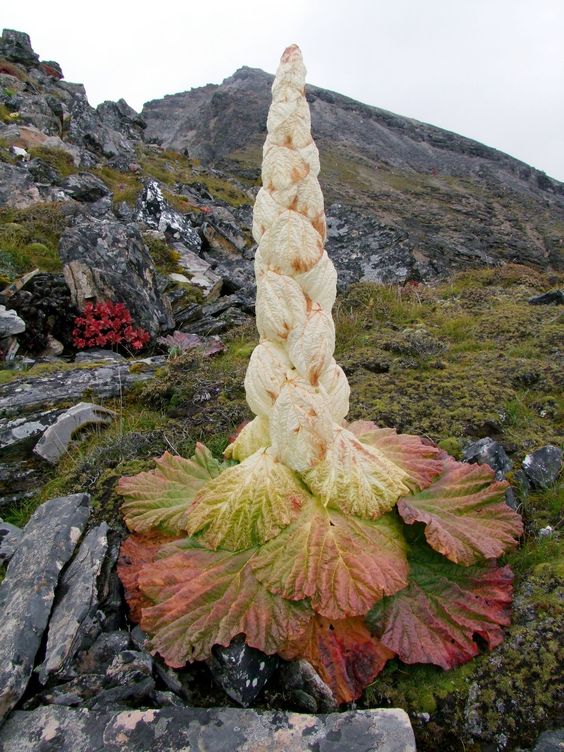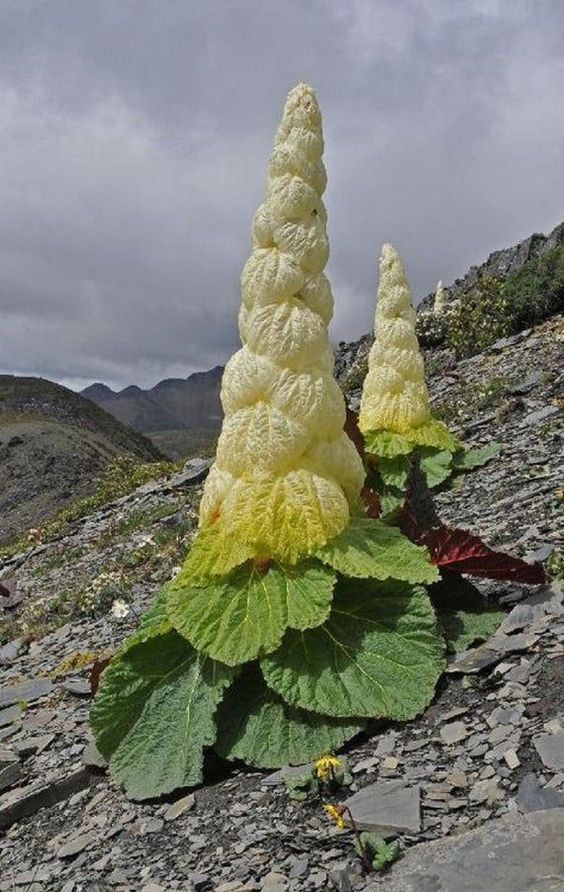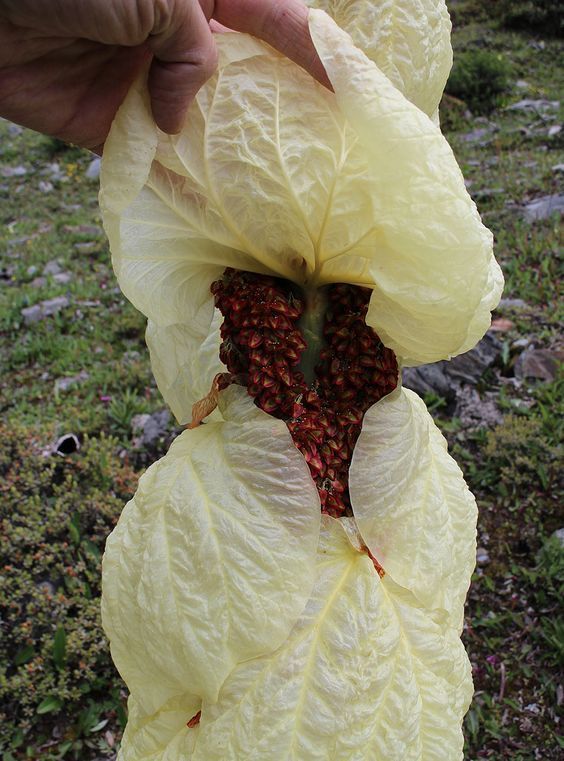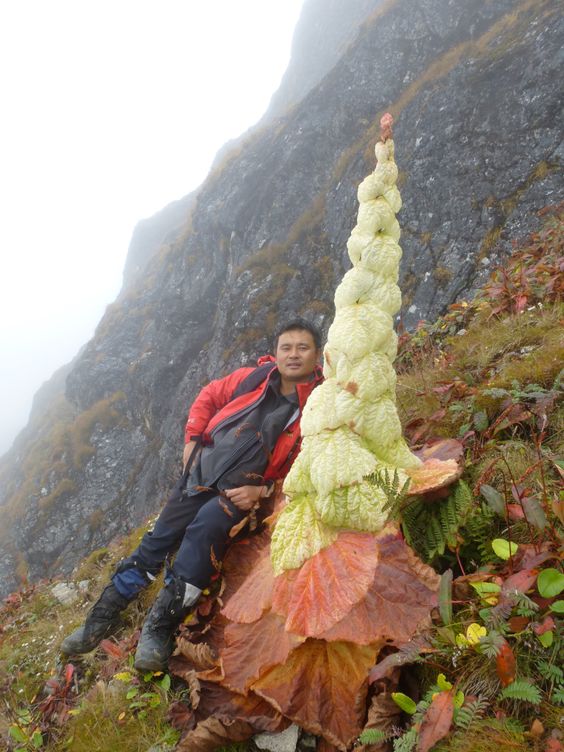The Himalayas are an awe-inspiring and epic natural wonder that boasts towering peaks, making it a challenge for adventurers around the world. While it may seem impossible to sustain life permanently on these mountains because of their elevation, this is not entirely true. Surprisingly, amidst sprawling shrubs and small herbs stands a unique plant that is a relative of rhubarb, commonly found in gardens and pies in more hospitable climates.

Introducing the majestic Rheum nobile, also known as the rhubarb. This incredible plant earns its noble title by thriving in some of the most extreme conditions on Earth. It grows at elevations ranging from 13,000 to 15,000 feet (4000-4800 m) where temperatures plummet and harmful UV radiation abounds. While many alpine plants take cover behind rocks and grow low to the ground, Rheum nobile defies the odds by reaching towering heights of up to 6 feet. This truly makes it a standout species in the buckwheat family and a true testament to the resilience of nature.

One of the most notable characteristics of this particular plant is its large spire composed of see-through bracts. These specific types of leaves are modified and do not have any chlorophyll, making them incapable of photosynthesis. Their primary purpose is to safeguard and provide warmth to the plant. The flowers are nestled behind the bracts and would be prone to freezing or exposure to UV radiation if left unprotected. As a solution, these pale bracts have specialized pigments that filter out harmful UV rays while creating an ideal environment for the flowers and seeds to thrive. It’s like the plant has its very own miniature greenhouse.

The plant’s temperature inside can be up to 10 degrees higher compared to the outside temperatures, which gives it an advantage in terms of reproduction at high elevations. However, the lack of pollinators in these areas poses a challenge for the plant. To attract them, Rheum nobile uses both visual and chemical cues. Its distinctive appearance stands out against the bleak surroundings while its chemical signals lure in potential pollinators.

The Rheum nobile plant has formed a beneficial connection with fungus gnats that reside at higher elevations. The plant emits a unique chemical that appeals to female fungus gnats, who then lay their eggs inside the plant’s seeds. However, the plant benefits from this relationship as well because the fungus gnats pollinate many more flowers than they harm. This mutualistic relationship allows both organisms to thrive in the mountainous terrain. The fungus gnats receive a protected place to nurture their offspring, while the plant receives necessary pollination and protection from harmful UV rays.






